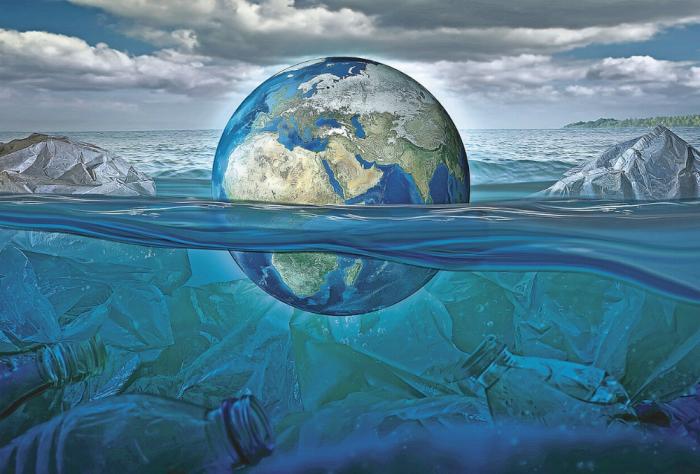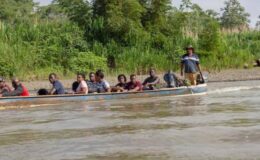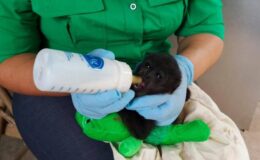Infamous “Plastic Island” shows no sign of shrinking.
- By : James Bryson
- Category : Conservation, Environmental, Human Interest

Recycle people and please don’t litter in the ocean.
https://www.laestrella.com.pa/cafe-estrella/cultura/230929/isla-basura-afecta-fauna-marina
The oceans cover more than 70% of the surface of planet Earth and are responsible for housing a wide variety of marine life. From tiny plankton to the largest whales, these creatures form an ecosystem that plays an important role in maintaining the planet.
Currently, this balance and order established by nature is being increasingly threatened by the human hand and the pollution it has caused in the enormous bodies of water. Activities such as industrial discharges, plastic pollution and chemical runoff are responsible for causing widespread and almost irreversible damage to marine fauna, with devastating consequences for both individual species and the entire maritime ecosystem.
‘La Decana’ held an interview with the study group of the Institute of Scientific Research and High Technology Services (Indicasat-AIP) to resolve doubts regarding the current scenario of marine fauna affected by pollution. The group is led by Dr. Rolando A. Gittens, and has the participation of researchers Heraclio Sanjur and Dania Castillo.
Current figures

The research group cited in a writing shared with the newspaper that the Food and Agriculture Organization of the United Nations (FAO) identified plastic as the most abundant marine debris in the world, representing 80% of all marine litter. reported “from the poles to the equator.”
It is estimated that there are around 170 trillion plastic particles in the oceans, equivalent to a combined weight of 2 million tonnes. While this waste is in the ocean, it is common to fragment into even smaller pieces that are recognized as microplastics (less than 5 millimeters) or nanoplastics (one millionth of a millimeter).
The research group also cited the Marviva Foundation to refer to plastic waste management in Panama. According to the information, an estimated 191,580 tons are produced annually by the total population, which corresponds to 12% of the daily production per person, equivalent to approximately 1.03 kg.
For the year 2020, an amount of 77,285 tons of plastic was not managed correctly in the country, causing 87% (67,672 t) of the total to have consequences in coastal areas. This causes marine species to ingest these materials or even become trapped in them.

The current panorama
Marine pollution has reached a large part of the oceans globally, ranging from the depths within the Mariana Trenches, the Challenger Deep at 10,935 meters deep, to the farthest sector of any continent and human civilization, the island Henderson more than 5,000 km away.
Due to the properties of plastic, the researchers explain that “it can last and float between bodies of water for a long time and due to photodegradation and other physical and chemical degradation processes, they fragment and disperse throughout the ocean until they converge. in subtropical gyres.
“This creates accumulations of garbage and this phenomenon is known as the Great Pacific Garbage Patch, in which 94% of the floating particles in this “garbage island” are classified as microplastics,” they added.
The United Nations reports that more than 800 species worldwide are affected by pollution and the absorption of these wastes such as “protists, part of what makes up plankton; copepods and amphipods, organisms part of zooplankton; annelid marine worms; cnidarians, a group made up of jellyfish, anemones and corals; crustaceans of the group of decapods and isopods; mollusks; sea birds; sea turtles; marine mammals and fish.”
Laws and measures
The researchers explained to La Estrella de Panamá that laws have recently been adopted locally that prohibit the use of single-use plastics, such as Law 1 of 2018, which promotes the use of reusable bags and prohibits the use of plastic bags with polyethylene.
Likewise, there is Law 187 of December 2, 2020, which regulates the progressive reduction and replacement of single-use plastics, and eliminates the sale of plastic straws as of December 31 of this year.
“These laws are positive to prevent marine pollution from its beginning on the continent and reduce its presence in local landfills, marking a starting point that should not be stopped,” the researchers expressed in their writing.
At the international level, through the fifth session of the United Nations Environment Assembly (UNEA-5.2) which was held in Nairobi, a resolution was proposed to end plastic pollution and forge an international agreement legally binding by 2024, with the aim of addressing the entire life cycle of plastic from its origin to its presence as waste in the sea.
“This will push towards a circular plastic economy, creating a precedent in the management of plastic waste globally,” said the professionals.
Short, medium and long term results
The experts cited an example of the pollution panorama in aquatic bodies, which dates back to World War II. After the war, plastic production was presented as a solution to the scarcity of natural resources. This achieved an exponential expansion of material from up to 2.3 million total tons by 1950 to 162 million tons three years later.
“If we compare it with the total production of all plastic in the world for 2015, this was 448 million tons, which means that half of all the plastic manufactured in the world was made in the first 15 years of the current century. “, they reported.
“By continuing with this trend of mass production of plastics and the incorrect deposition of this waste in the oceans, of which 5.3 to 14 million tons are attributed annually, the theory that by 2050 there will be more plastics than fish in the sea, which represent more than half of the species of vertebrate animals in the world, will become a reality,” they concluded.
Other activities
Researchers warn of pollution and its effects on marine life because it has caused enormous damage, such as “blockages in the digestive tract, inflammation, false satiety, cellular damage in the lymphatic system, thrombosis, liver stress, changes in reproductive behaviors that impact negatively to the offspring, mortality, bioaccumulation and biomagnification of the microplastic product of the release of chemicals as the contaminant degrades.”
They recognize that there are other activities of which we must be aware since they also affect the present and future of aquatic fauna, such as overfishing, not only because it represents a decrease in marine species, but also because “it can contaminate marine bodies by improperly discarding fishing instruments such as nets and hooks, causing animals to become trapped and drown.”
Additionally, “climate change causes ocean acidification, global warming, and dead zones in the ocean due to marine hypoxia, all because of carbon dioxide.”
Immediate action
The impact of pollution on marine species is an issue that requires immediate attention and action. The effect of one ecosystem on Earth can represent a consequence on another. The researchers affirm that pollution in the environments where we live is part of the “reports of microplastic in human blood, breast milk, feces and placentas, serving as a very clear signal in the change in our way of depending on plastic. and to begin to give it a sustainable use for posterity.”
As a society, it is essential to address climate change, because it aggravates the problems caused by pollution. This is achieved by reducing plastic waste, implementing strict regulations on industrial and agricultural runoff, and transitioning to more sustainable practices.



No Comments